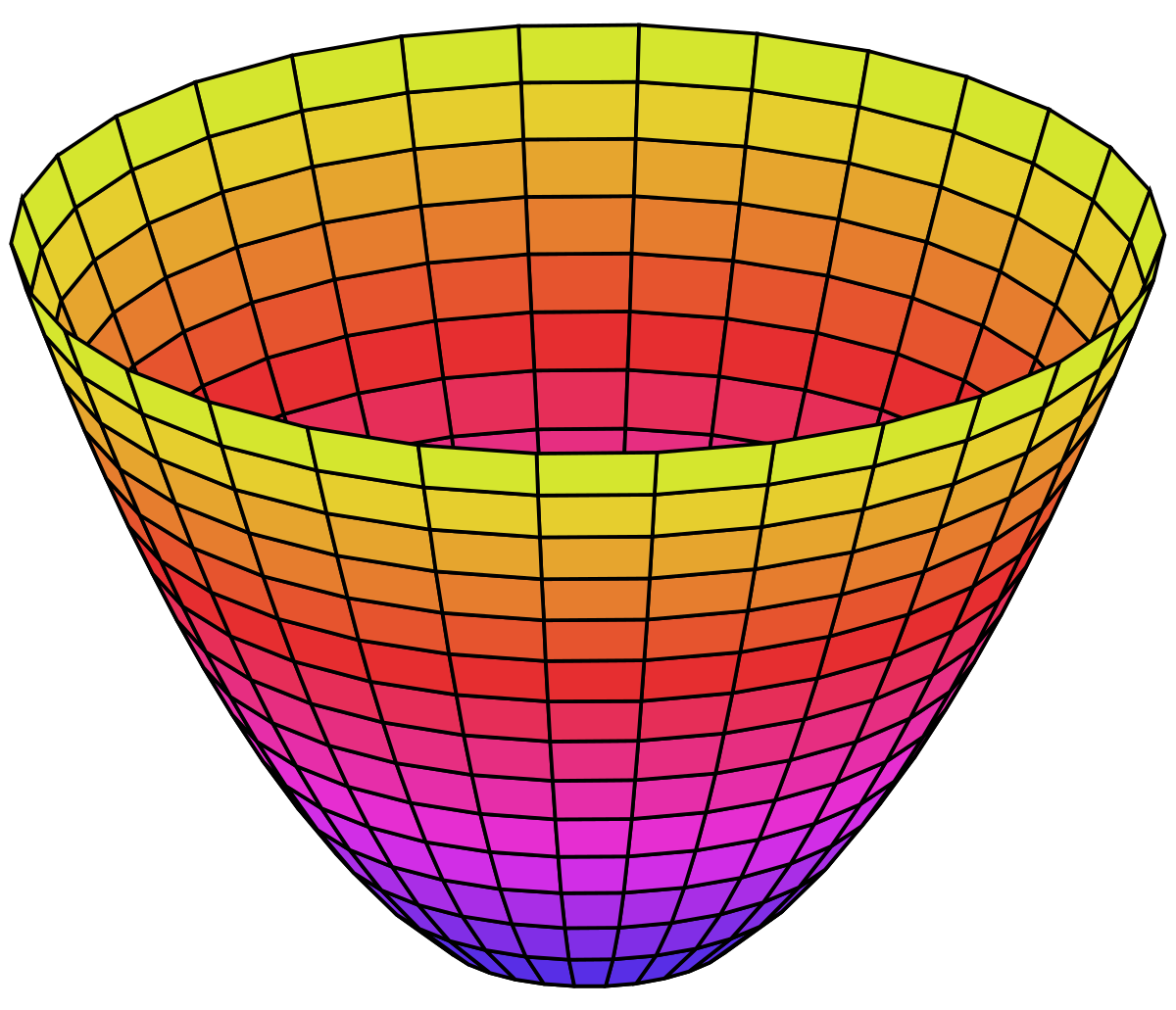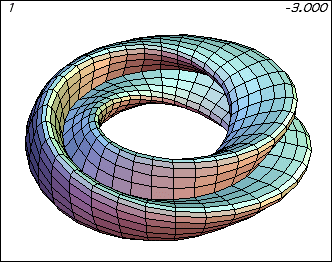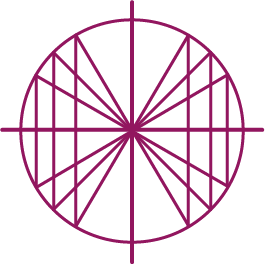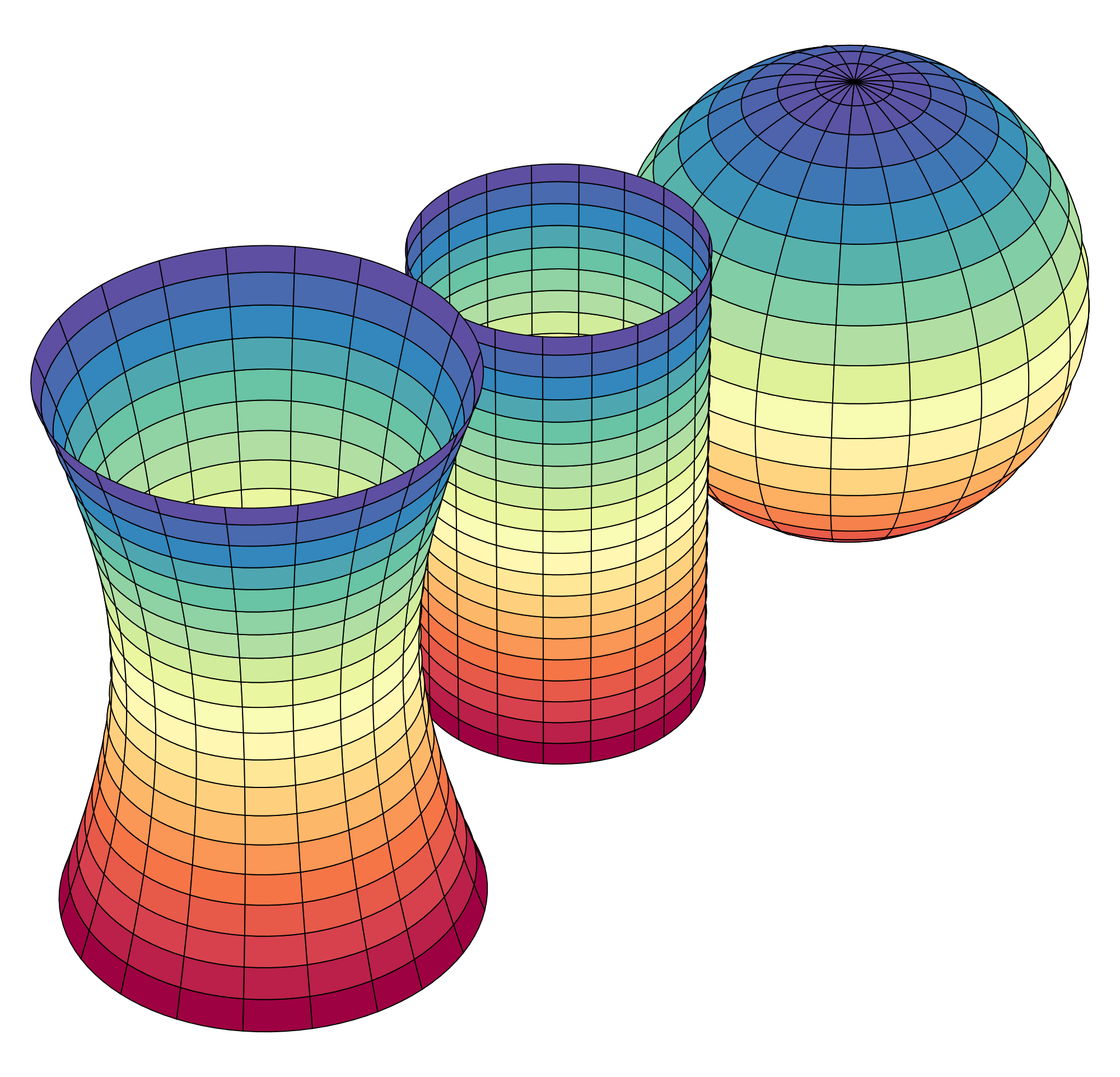Honors Data Science Calculus Courses for Academic Credit Online
HONORS for Data Science New Course Sequence
In Summer 2023, Distance Calculus introduced a truly unique, condensed, combined freshman calculus HONORS for Data Science sequence of specifically designed for students preparing for degrees in Data Science and related fields. Accelerated and refined curriculum, with emphasis on data connections to the lower calculus sequences, using the higher computer programming environment Mathematica.- Math 255: Honors Calculus I+II For Data Science
Combined Calculus I+II course to bridge all of freshman calculus in a condensed, honors course - Math 337: Honors Linear Algebra for Data Science
Computationally-based Linear Algebra course from matrix theory to Principal Component Data Analysis, Data Compression, and the Spectral Theorem - Math 311: Computational Probability Theory
Calculus-based statistics and probability theory from a distinctly computational approach
Nationally, "Honors" courses usually are centered on a mathematically rigorous development of the concepts of calculus, bringing many advanced topics from upper division courses such as Advanced Calculus and Real Analysis into the freshman honors calculus courses. While this may be a worthwhile approach for students who seek to become mathematics majors, it creates, for many students, an inflated level of course difficulty of questionable benefit to related fields of study.
Our approach to Honors courses is built upon a distinctly different educational philosophy:
- Freshman & Sophomore Calculus is NOT the correct math level to increase rigor
We believe that mathematical rigor is learned after exposure to the calculus, in the upper division, after some time and maturing of mathematical thought is allowed to organically develop. No student ever understood the concept of a derivative because the natural numbers were first axiomatically developed. - Honors means DEEPER, not just HARDER
In mathematics, the potential for making any course harder is a rather simple proposition. Work SMARTER, not HARDER mandates that an honors course should not be more difficult just to say it is. A true honors student wants to go deeper into the topics, not flirt with academic demoralization via some mathematical bootcamp experience. - Technical Writing Curriculum
While axiomatic development has its place in upper division math, core improvement of technical writing skills will benefit all students in all disciplines with immediate effect. If calculus is supposed to be mathematical preparation for science, technology, and engineering related fields, then development of technical writing skills should be as important as computational prowess. - Course Term Paper
Each Honors course student will write a 10-20 page term paper on a topic chosen in collaboration with the course instructor, empowering the student to simultaneously improve technical writing skills and deepen knowledge in the student's chosen academic field via a uniquely creative exercise that will transcend the traditional course boundaries.
In summary, our Honors courses go deeper and broader in the curriculum, offer a notch more challenging course work set, and featuring a technical writing curriculum that truly prepares the student for further academics in the sciences.
| Course Title: | Honors Calculus I+II for Data Science |
| Catalog Number: | DMAT 255 |
| Credits: | 5 Semester Credit Hours |
| Syllabus PDF: | PDF Syllabus for Honors Calculus I+II for Data Science |
| Delivery: | Fully Online, Asynchronous, Self-Paced |
| Click Here to Enroll in DMAT 255 - Honors Calculus I+II for Data Science | |
| Course Title: | Honors Computational Linear Algebra for Data Science |
| Catalog Number: | DMAT 337 |
| Credits: | 5 Semester Credit Hours |
| Syllabus PDF: | PDF Syllabus for Honors Computational Linear Algebra for Data Science |
| Delivery: | Fully Online, Asynchronous, Self-Paced |
| Click Here to Enroll in DMAT 337 - Honors Computational Linear Algebra for Data Science | |
| Course Title: | Computational Probability Theory |
| Catalog Number: | DMAT 311 |
| Credits: | 3 Semester Credit Hours |
| Syllabus PDF: | PDF Syllabus for Computational Probability Theory |
| Delivery: | Fully Online, Asynchronous, Self-Paced |
| Click Here to Enroll in DMAT 311 - Computational Probability Theory | |
| Course Title: | Honors Calculus I+II for Data Science |
| Catalog Number: | DMAT 255 |
| Credits: | 5 Semester Credit Hours |
| Syllabus PDF: | PDF Syllabus for Honors Calculus I+II for Data Science |
| Delivery: | Fully Online, Asynchronous, Self-Paced |
| Click Here to Enroll in DMAT 255 - Honors Calculus I+II for Data Science | |
Roger Williams University Course Catalog Listing: DMAT 255 - Honors Calculus I+II for Data Science
Course: DMAT 255
Course Title: Honors Calculus I+II for Data Science
Transcript Course Title (30 Characters Max:): Honors Calc BC for Data Sci
Course Description: An honors-level single course introduction to differential and integral calculus for data science students, with emphasis on a modern, empirical exposition of the classical subject, condensing the essential topics from first year calculus. Topics include a study of the algebraic, numerical, and graphical aspects of polynomial, exponential, logarithmic, and trigonometric functions, limits, function growth, derivative analysis and optimization, introduction to differential equations, methods and applications of integration, the Fundamental Theorem of Calculus, calculus of data sets, numerical issues of derivative and integral computations, Monte-Carlo method, Taylor's Theorem and spline approximations, and methods of integration. Honors courses will include greater breadth and depth of topics, and develop technical writing skills, culminating in a combination programming project and mathematical term paper on an approved topic. [5 Semester Credits]
Prerequisite: Successful completion with B grade or higher in Precalculus with Trigonometry or equivalent, or consent of instructor; experience with a computer programming language.
E-Textbook: Calculus&Mathematica by Davis/Porta/Uhl
Software: Mathematica
PDF Course Syllabus: Detailed Course Syllabus in PDF for DMAT 255 - Honors Calculus I+II for Data Science
DMAT 255 - Honors Calculus I+II for Data Science - Learning Outcomes
- 1. To understand and compute algebraic, numerical, and graphical limits at finite and infinite values;
- 2. To understand and compute the fundamental concept of the derivative;
- 3. To understand and compute various measurements of growth of a function
- 4. To algebraically compute derivatives of common functions using summation, product, quotient, and chain rules for derivatives;
- 5. To understand and compute optimization of functions using derivatives, finding critical values;
- 6. To understand and compute the second derivative;
- 7. To understand and compute first order differential equations;
- 8. To understand and compute parametric equations, including projectile motion;
- 9. To understand and calculate numerically and graphically the core concepts of the integral for applications to signed area measurements;
- 10. To compute numerically, algebraically, and graphically integrals of a variety of functions;
- 11. To algebraically compute integrals of basic polynomial, exponential, and trigonometric functions, with an introduction to the algebraic substitution technique;
- 12. To use of tools of differential and integral calculus in various applications
- 13. To understand and compute the Fundamental Theorem of Calculus
- 14. To understand and compute an integral functions, including inverse trigonometric and logarithmic integrals that do not algebraically resolve;
- 15. To utilize computer algebra and graphing software to amplify traditional manual computation techniques.
- 16. To understand spline interpolation with polynomial functions; points of contact
- 17. To understand Taylor's Theorem, error analysis
- 18. To understand convergences and divergence concepts of sequences, series, polynomial approximations
- 19. To understand and compute double integrals
- 20. To understand and compute 3D vector analysis, dot product, planes, and cross products
- 21. To understand and compute partial derivatives and tangent planes to a surface
- Honors Additional Topics:
- 22.* To investigate data interpolation and algebraic modeling of data sets using polynomial and trigonometric functions
- 23.* To investigate numerical limits error analysis, the need for Lagrange, Newton, L'Hopital, Extrapolation, more advanced polynomial and rational polynomial approximation methods.
- 24.* To understand the concept of algebraic integration in Finite Terms
- 25.* To understand and compute integrals using complex integration techniques
- 26.* To understand and compute numerical integration techniques of Newton, Midpoint, and Runge-Kutta, and higher RK approximations.
- 27.* To understand and explore higher integral functions, such as those defined by elliptical and hyperbolic integrals
- 28.* To explore and analyze Preditor-Prey systems of differential equations
- 29.* To develop mathematical technical writing skills, culminating in a term paper on an approved topic
- 30.* To utilize programming-based computer algebra software to make investigations for a programming term project in application to data science
- * = Additional topics for Honors course
DMAT 255 - Honors Calculus I+II for Data Science - Syllabus of Topics
1. Getting Started 1.1 Email and Chat 1.2 Learning About the Course 1.3 Required Hardware 1.4 Software Fundamentals 2. Growth: Preparing for the Derivative 2.1 Growth of Linear Functions 2.2 Growth of Power Functions 2.3 Growth of Exponential Functions 2.4 Dominance of Growth of Functions 2.5 Percentage Growth of Functions 2.6 Global Scale: Infinite Limits 2.7 Data Functions and Interpolation 2.8 Approximation of Functions by Linear Functions 3. Continuity 3.1 Limits 3.2 Continuous Functions 3.3 Jump Discontinuities 3.4 Piecewise Functions and Continuity 3.5 Limit Rules 4. Exponential Functions and Natural Logarithms 4.1 e = Euler's Number 4.2 Natural Logarithm 4.3 Growth Analysis 4.4 Applications: Carbon Dating 4.5 Percentage Growth and Steady Growth of Exponential Functions 4.6 Data Functions and Logarithmic Analysis 4.7 Inverse Functions 4.8 Applications: Compound Growth Rates 4.9 Applications: World Population 5. The Derivative of Polynomial, Exponential, Logarithmic, and Fractional Powers 5.1 Instantaneous Growth Rates 5.2 Definition of the Derivative 5.3 Computing the Derivative Graphically 5.4 Computing the Derivative Algebraically 5.5 Computing the Derivative Numerically 5.6 Average Growth Rate vs. Instantaneous Growth Rate 5.7 Applications of the Derivative: Spread of Disease 5.8 Finding Maxima and Minima of Functions 5.9 Relating a Function and Its Derivative 6. Computing Derivatives 6.1 Sum, Difference, Product, Quotient Rule 6.2 Chain Rule 6.3 Instantaneous Percentage Growth 6.4 Growth Dominance 7. Using Derivatives 7.1 Finding Maxima and Minima 7.2 Finding Good Representative Plots 7.3 Applications: Maximizing Volume 7.4 The Second Derivative 7.5 Applications: The Space Shuttle Challenger 8. Integration 8.1 Measuring Area Under a Curve 8.2 Definition of the Integral 8.3 Properties of Integrals, Symmetry 8.4 Integrals of Data Functions 8.5 Numerical Methods: Rectangles, Trapezoids 8.6 Undefined Integrals 8.7 Numerical Calculation of Integrals 8.8* Monte-Carlo Method of Integration 9. Fundamental Theorem of Calculus 9.1 Derivative of an Integral 9.2 Integral of a Derivative 9.3 Fundamental Formula 9.4 Distance, Velocity, and Acceleration 9.5 Improper Integrals 9.6 More Properties of Integrals 9.7 Applications: Measure Accumulation Totals 9.8 Indefinite Integrals and Antiderivatives 9.9 u-Substitution 9.10 Inverse Circular and Hyperbolic Trigonometric Functions 10.* Limits Revisited 10.1* Limitations of Numerics with Limits 10.2* Lagrange, Newton, Extrapolation Numerical Methods 10.3* L'Hopital's Rule for Limits 11.* Preditor-Prey Systems 11.1* Parametric Solutions of Differential Equations 11.2* Preditor-Prey Models 11.3* Applications 12.* Data Interpolation 12.1* Linear and Quadratic Approximations 12.2* Polynomial Approximations and Interpolation 12.3* Trigonometric Function Interpolation 13.* Algebraic Integration Theory 13.1* Machine Integration Engines 13.2* Integration in Finite Terms 13.3* Integratability and Limitations 13.4* Defining advanced special functions using integrals or series 14. Taylor's Expansion of a Function 14.1 Splines and Smooth Splines 14.2 Points of Contact 14.3 Application: Landing an Airplane 14.4 Taylor Expansion 14.5 Recognizing Familiar Expansions 14.6 Using Expansions for Approximations 14.7 Derivatives and Integrals of Expansions 14.8 Expansions At Other Points 14.9 Newton's Method 14.10 Convergence Intervals and Barriers 14.11 Calculating Limits: L'Hopital's Rule 14.12* Expansions and Solving Differential Equations 14.13* Complex Exponentials 14.14* Euler, Midpoint, Runge-Kutta Integral Estimates 15.* Differential Equations 15.1* Types of Differential Equations 15.2* Linkage to Algebraic and Numerical Integration Theory 15.3* Power Series Solutions to Differential Equations 15.4* Elliptical and Hyperbolic Integration Functions 15.5* Exploring Special Named Functions 16. Polar Coordinates 16.1 Basic Graphing 16.2 Recognizable Curves 16.3 Differentiation and Integration in Polar Coordinates 17. Vector Analysis 17.1 Vector Arithmetic 17.2 Dot Product, Cross Product 17.3 Planes 17.4 Partial Derivatives 17.5 Tangent Planes 18.* Mathematical Writing 18.1* Cogent writing 18.2* Mathematical Presentation 18.3* Term Paper Topic and Research
| Course Title: | Honors Computational Linear Algebra for Data Science |
| Catalog Number: | DMAT 337 |
| Credits: | 5 Semester Credit Hours |
| Syllabus PDF: | PDF Syllabus for Honors Computational Linear Algebra for Data Science |
| Delivery: | Fully Online, Asynchronous, Self-Paced |
| Click Here to Enroll in DMAT 337 - Honors Computational Linear Algebra for Data Science | |
Roger Williams University Course Catalog Listing: DMAT 337 - Honors Computational Linear Algebra for Data Science
Course: DMAT 337
Course Title: Honors Computational Linear Algebra for Data Science
Transcript Course Title (30 Characters Max:): Honors Linear Algebra Data Sci
Course Description: An honors-level first course in matrix algebra and linear spaces with emphasis on computational software techniques and geometrical analysis, with applications applicable to data science. Topics include matrices, solutions of systems of linear equations, determinants, linear spaces and transformations, inner products, higher dimensional spaces, inverses and pseudoinverses, rank, Singular Value Decomposition, change of basis, Eigenvalues and Eigenvectors, matrix decomposition and diagonalization, Principal Component Analysis, image and data compression, and an introduction to numerical analysis issues in the subject. Honors courses will include greater breadth and depth of topics, and develop technical writing skills, culminating in a mathematical term paper on an approved topic. [5 Semester Credits]
Prerequisite: Successful completion with grade B or higher in Calculus II or equivalent, or consent of instructor.
E-Textbook: Matrices, Geometry & Mathematica by Davis/Porta/Uhl
Software: Mathematica
PDF Course Syllabus: Detailed Course Syllabus in PDF for DMAT 337 - Honors Computational Linear Algebra for Data Science
DMAT 337 - Honors Computational Linear Algebra for Data Science - Learning Outcomes
- 1. To understand the core connection between matrix algebra and a study of systems of linear equations
- 2. To understand and compute measurements of vectors and their geometry
- 3. To understand and compute core matrix algebra operations and their geometrical interpretations
- 4. To understand and compute the fundamental properties of determinants and inverses of matrices, both for square and non-square generalizations
- 5. To understand and compute Singular Value Decomposition
- 6. To understand and compute the core concept of rank and its variations
- 7. To understand and compute Gaussian elimination and other strategies for finding solutions or approximate solutions to systems of linear equations
- 7. To understand and compute bases, change of bases, spanning and linear independence, kernel and image sets
- 8. To understand and compute the diagonalization of a matrix, both with Singular Value Decomposition, and Eigenvalue - Eigenvector constructions.
- Honors Topics:
- 9.* To understand and compute interpolating polynomials and Fourier fitting and analysis
- 10.* To understand and compute the Gram-Schmidt process in relation to Singular Value Decomposition
- 11.* To understand and compute the diagonalization of a matrix when Eigenvalues are repeated and/or complex.
- 12.* To understand and compute the relationship of matrix diagonalization and dynamical systems of differential equations
- 13.* To understand and compute the Spectral Theorem
- 14.* To understand Principal Component Analysis and additional concepts in data fitting
- 15.* To understand issues concerned with image compression and round-off error
- 16.* To develop mathematical technical writing skills, culminating in a term paper on an approved topic
DMAT 337 - Honors Computational Linear Algebra for Data Science - Syllabus of Topics
1. Getting Started 1.1 Email and Chat 1.2 Learning About the Course 1.3 Required Hardware 1.4 Software Fundamentals 2. Vectors 2.1. Geometry of Vectors 2.2. Perpendicular Frames 2.3. Curves in 2D: Change of Frames/Basis 2.4. Dot Products 2.5. Cross Products 2.6. Ellipses and Ellipsoids 2.7. Area and Volume 3. Matrices 3.1 Basics 3.2 Transforming Curves 3.3 Matrix Arithmetic 3.4 Translations and Rotations 3.5 Shears 3.6 Linear Transformations 3.7 Inverses 3.8 Determinants 3.9 Transposes 3.10 Matrix Decomposition: Singular Value Decomposition 3.11 Rank 3.12 Projections 3.13 Higher Dimensions 4. Linear Systems 4.1 Conversion to Matrix Notation 4.2 Gaussian Elimination 4.3 Vector Spaces and Subspaces 4.4 Numerical Considerations 4.5 Applications: Least Square Fit 4.6 Spanning Sets; Basis 4.7 Linear Independence 4.8 Pseudo Inverses 4.9 Approximate Solutions 4.10 Null Space and Image Space 4.11* Interpolating Polynomials and Trigonometric Functions: Fourier Fit 4.11* Undetermined Coefficients in Differential Equations Systems 5. Eigenvalues and Eigenvectors 5.1 Diagonalization of a Matrix 5.2 Eigenvalues 5.3 Eigenvectors 5.4 Exponential of a Matrix 6. Principal Data Component Analysis 6.1 Image and Data Compression 6.2 Round-off Error 6.3 Principal Data Component Analysis with SVD 7.* Honors Topics 7.1* Gram-Schmidt Process and Singular Value Decomposition 7.2* 4D Projections 7.3* Non-Real Eigenvalue and Eigenvectors 7.4* Applications to Dynamical Systems 7.5* Spectral Theorem 8.* Mathematical Writing 8.1* Cogent writing 8.2* Mathematical Presentation 8.3* Term Paper Topic and Research
| Course Title: | Computational Probability Theory |
| Catalog Number: | DMAT 311 |
| Credits: | 3 Semester Credit Hours |
| Syllabus PDF: | PDF Syllabus for Computational Probability Theory |
| Delivery: | Fully Online, Asynchronous, Self-Paced |
| Click Here to Enroll in DMAT 311 - Computational Probability Theory | |
Roger Williams University Course Catalog Listing: DMAT 311 - Computational Probability Theory
Course: DMAT 311
Course Title: Computational Probability Theory
Transcript Course Title (30 Characters Max:): Comp Probability Theory
Course Description: A first course in calculus-based statistics and probability with emphasis on computational software techniques, geometrical analysis, and numerical processes applications. Topics include Monte-Carlo method, measurements of probability, distributions, applications to data analysis, discrete and random variables, conditional and joint probability concepts, Central Limit Theorem, correlation and regression, confidence intervals. [3 Semester Credits]
Prerequisite: Successful completion (C- or higher) of Calculus II or equivalent, or consent of instructor.
E-Textbook: Probability, Statistics & Mathematica by Davis/Porta/Uhl
Software: Mathematica
PDF Course Syllabus: Detailed Course Syllabus in PDF for DMAT 311 - Computational Probability Theory
DMAT 311 - Computational Probability Theory - Learning Outcomes
- 1. To understand the core concepts of Probability, Sampling, Distributions, and Density
- 2. To understand and compute Monte-Carlo method for integration
- 3. To understand and compute Expected Value, Variance, Mean, Mode, Median
- 4. To understand and compute Probability and Conditional Probability
- 5. To understand and compute Markov's and Chebyshev's Theorems
- 6. To understand and compute normally and exponentially distributions
- 7. To understand and compute calculus-based formulas and relationships between Cumulative Distribution Functions and Probability Density Functions
- 8. To understand and compute the Central Limit Theorem
- 9. To understand the core concepts of discrete and random variables
- 9. To understand and compute Joint Distributions, Correlations, and Covariance
- 10. To understand the Law of Total Probability
- 11. To understand and compute the classic statistics measures of Confidence Intervals and Hypothesis testing.
DMAT 311 - Computational Probability Theory - Syllabus of Topics
1. Getting Started
1.1. Email and Chat
1.2. Learning About the Course
1.3. Required Hardware
1.4. Software Fundamentals
2. Simulations
2.1. Uniform Distributions
2.2. Monte Carlo Methods
2.3. Random Walks
2.4. Shooting craps; Iterated Fractals.
3. Data Analysis
3.1. Frequency
3.2. Expected Value
3.3. Cumulative Distributions
3.4. Variance
3.5. Histograms
3.6. Related formulas for Expected Values and Variance
4. Probabilities
4.1. Calculating Probability
4.2. Union and Intersection and Probability
4.3. Conditional Probability Formula
4.4. Independence
4.5. Indicator functions
5. More Data Analysis
5.1. Markov's Inequality
5.2. Chebyshev's Theorem
5.3. Laws of Large Numbers
5.4. One-Sided Chebyshev Theorem
6. Normal and Exponential Distributions
6.1. Approximately Normally Distributed Sets
6.2. Normal Distribution
6.3. Approximately Exponentially Distributed Sets
6.4. Exponential Distribution
6.5. Memoryless Property of Exponential Distributions
7. Random Variables
7.1. “Random Variables”
7.2. Discrete Random Variables
7.3. Continuous Random Variables
7.4. Probability Density Functions
7.5. Cumulative Distribution Functions
7.6. Expected Values and Variance
7.7. Markov, Chebyshev, and Law of Large Numbers Revisited
7.8. Mean, Median, and Mode
8. Joint Distributions
8.1. Joint Probability Calculations
8.2. Discrete & Continuous
8.3. Expected Values, Covariance, and Correlation.
8.4. Conditional Probability Calculations
8.5. Conditional Expectations
8.6. The Law of Total Probability
9. Central Limit Theorem
9.1. Generating Functions for Discrete Random Variables
9.2. Generating Functions for Continuous Random Variables
9.3. Generating Functions and Independence
9.4. Central Limit Theorem
9.5. Chi-squared and Gamma random variables
10. Classic Statistics
10.1 Sampling
10.2. Confidence Intervals
10.3. Hypothesis testing
Legacy Course Connection
Legacy Distance Calculus Course:
DMAT 315 - Probability Theory
In 2023, Distance Calculus introduced a new catalog of courses. The connection between the old courses and the new courses are given here:
Legacy Course Description: Emphasizes probability, probability density functions, distributions, statistical inferences and estimation, correlation, and regression. (3 credits)
Distance Calculus - Student Reviews




Date Posted: Feb 28, 2020
Review by: Teddy M.
Courses Completed: Precalculus, Calculus I
Review: Pros: once you get going, you can go really fast. The visual textbook is pretty cool. The instructors were very responsive. Cons: the movies are great, but the software crashes more than it should. Sometimes it is just a hassle doing things in the software instead of on paper, but once I got used to the software, it was ok.
Transferred Credits to: Texas Christian University




Date Posted: Jun 2, 2021
Review by: Samuel H.
Student Email: samuel.howell@g.fmarion.edu
Courses Completed: Linear Algebra
Review: Nothing but praise for Dr. Curtis. He's an excellent professor who is very responsive and knowledgeable. I did this course at night while working full-time, and I often skyped him late in the evening with questions. He never took long to respond, regardless of when it was. I finished this course in about a month and a half, and I worked for it. For those looking for an easy A, this is not it. You will have to put in serious work, but you will come out of the course with a good understanding of the material, especially if you apply yourself throughout the entirety of the course.
Transferred Credits to: Francis Marion University





Date Posted: Apr 6, 2020
Review by: Paul Simmons
Courses Completed: Multivariable Calculus, Differential Equations
Review: I took Multivariable and Diff Eq during the summer. The DiffEq course was awesome - very useful for my physics and engineering course. I was unsure about Mathematica at first, but I got the hang of it quickly. Thank you Distance Calculus!
Transferred Credits to: University of Oregon
 Freshman Math Courses
Freshman Math Courses
- Applied Calculus for Business [3 credits] [3CR]
- Applied Calculus for Life Science [3 credits] [3CR]
- Calculus I[4 credits] [4CR]
- Calculus II[4 credits] [4CR]
 Sophomore Math Courses
Sophomore Math Courses
- Multivariable Calculus III [4 credits] [4CR]
- Differential Equations [3 credits] [3CR]
- Linear Algebra [4 credits] [4CR]
- Probability Theory [3 credits] [3CR]
 Honors Math Courses
Honors Math Courses
- Honors Calculus I [5 credits] [5CR]
- Honors Calculus II [5 credits] [5CR]
- Honors Calculus I+II for Data Science [5 credits] [5CR]
- Honors Multivariable Calculus [5 credits] [5CR]
- Honors Differential Equations [4 credits] [4CR]
- Honors Linear Algebra [5 credits] [5CR]
- Honors Linear Algebra for Data Science [5 credits] [5CR]
 Lower Division Math Courses
Lower Division Math Courses
- Precalculus with Trigonometry [4 credits] [4CR]
- Introductory Statistics [4 credits] [4CR]
- Finite Mathematics [3 credits] [3CR]
- Discrete Mathematics [4 credits] [4CR]
 Upper Division Math Courses
Upper Division Math Courses
- Computational Abstract Algebra [4 credits] [4CR]
- Computational Differential Geometry [4 credits] [4CR]

